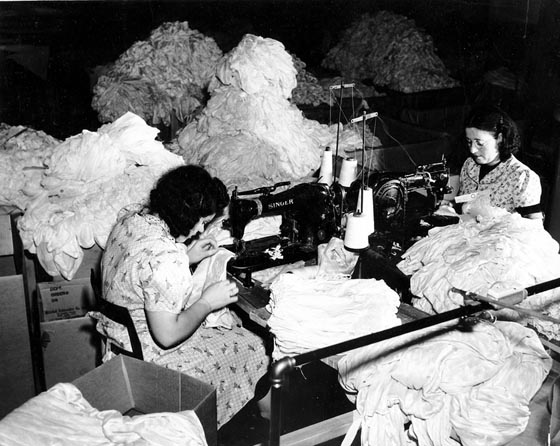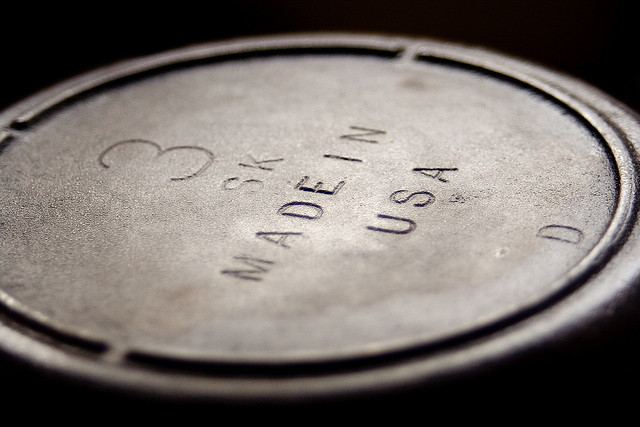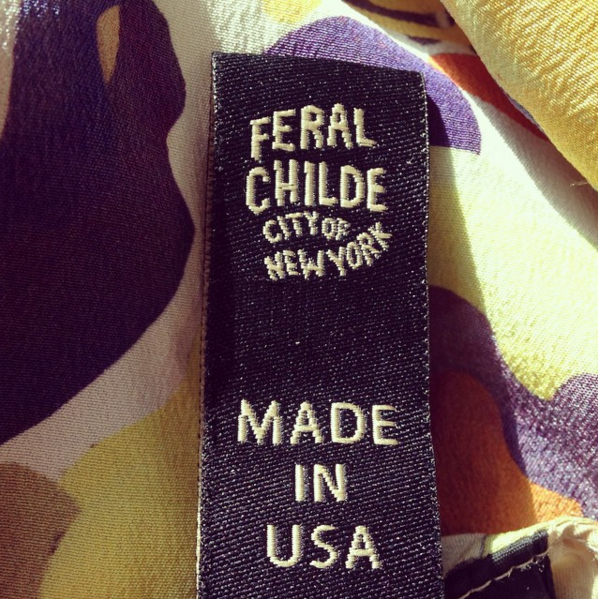
What Does Made In USA Really Mean? The Textile Test Series Investigates
Photo: Kheel Center via Flickr
Conscious consumers are already aware of the positive impact they can make by choosing locally sourced food, but clothing is still one aspect of shopping that can leave a lot to be desired in terms of sustainability. Right off the bat, the “Made In USA” mark seems like an easy way to ensure that anything you buy is produced locally (and ethically) since the assumption is that the label ensures that the product has not been constructed in a sweatshop overseas.
Unfortunately, allegations against American designers such as Alexander Wang and Donna Karan make it evident that sweatshop labor isn’t exclusive to the rest of the world. Which bears the questions, what does “Made In USA” really mean, and is it always the most sustainable choice?
The “Made In U.S.A.” label is regulated by the Federal Trade Commission, and in order for a product to officially qualify for this label it must be “all or virtually all” made in the United States. It sounds simple enough, but the broad scope of this requirement makes defining whether or not a product fits the label a tricky process that takes over 40 pages for the FTC to explain. Fear not, however: here’s a quick summary on how to read the fine print.
Image via Flickr User Nic McFee
How do companies get to claim the “Made In USA” label?
For a product to be called “Made In USA,” it must be manufactured on U.S. soil. Conversely, this also means that a company that manufactures their product on U.S. soil is not necessarily required to get approved before using the “Made In USA” label.
How does the FTC apply the “all or virtually all” standard?
“All or virtually all” means that all significant parts and processing that go into the product must be of U.S. origin. That is, the product should contain no — or negligible — foreign content.
However, guidelines on determining just how significant those parts and processing must be is quite vague considering this is one of the biggest qualifications. Some of the factors the FTC considers is how much of the product’s total manufacturing costs can be assigned to U.S. parts and processing, and how far removed any foreign content is from the finished product, but ultimately a manufacturer or marketer just needs “competent and reliable evidence” to back up the claim that their product is “all or virtually all” made in the U.S.
The only products that are required to be labeled “Made In USA” are cars and textile, wool, and fur products.
The Textile Fiber Products Identification Act and Wool Products Labeling Act requires most clothing products to bear a Made In USA label if the final product was manufactured in the U.S. But it’s important to note that this is regardless of where the materials used earlier in the manufacturing process were sourced from, meaning that even if the yarn on your sweater came from India it would still be permitted to bear a Made In USA label as long as it was knitted in America.
The Federal Trade Commission is not a policing agency.
Since the purpose of the FTC is to prevent deception in the marketplace, their primary concern is that the label doesn’t mislead consumers, but that doesn’t mean that they have agents browsing stores for violations. Because the agency relies on consumer complaints to notify them of infractions, it means that the FTC is far more reactive than proactive.
Manufacturing in the U.S.A. should be a positive, especially if it creates jobs stateside, but current FTC rules makes us wonder if we should be implementing stricter guidelines in regards to the origins of the materials instead of just their assembly. In the meantime, we as consumers can do our due diligence by staying informed and asking the companies we buy from about how, where and by whom our clothing was made.
If you believe that a company is falsely making a “Made In USA” claim, you can notify the FTC here.
Check out other stories in Eco-Chick’s Textile Test series:
Is Tencel (AKA Lyocell) A Sustainable Fabric?
Is Bamboo a Sustainable Fabric Fraud?






